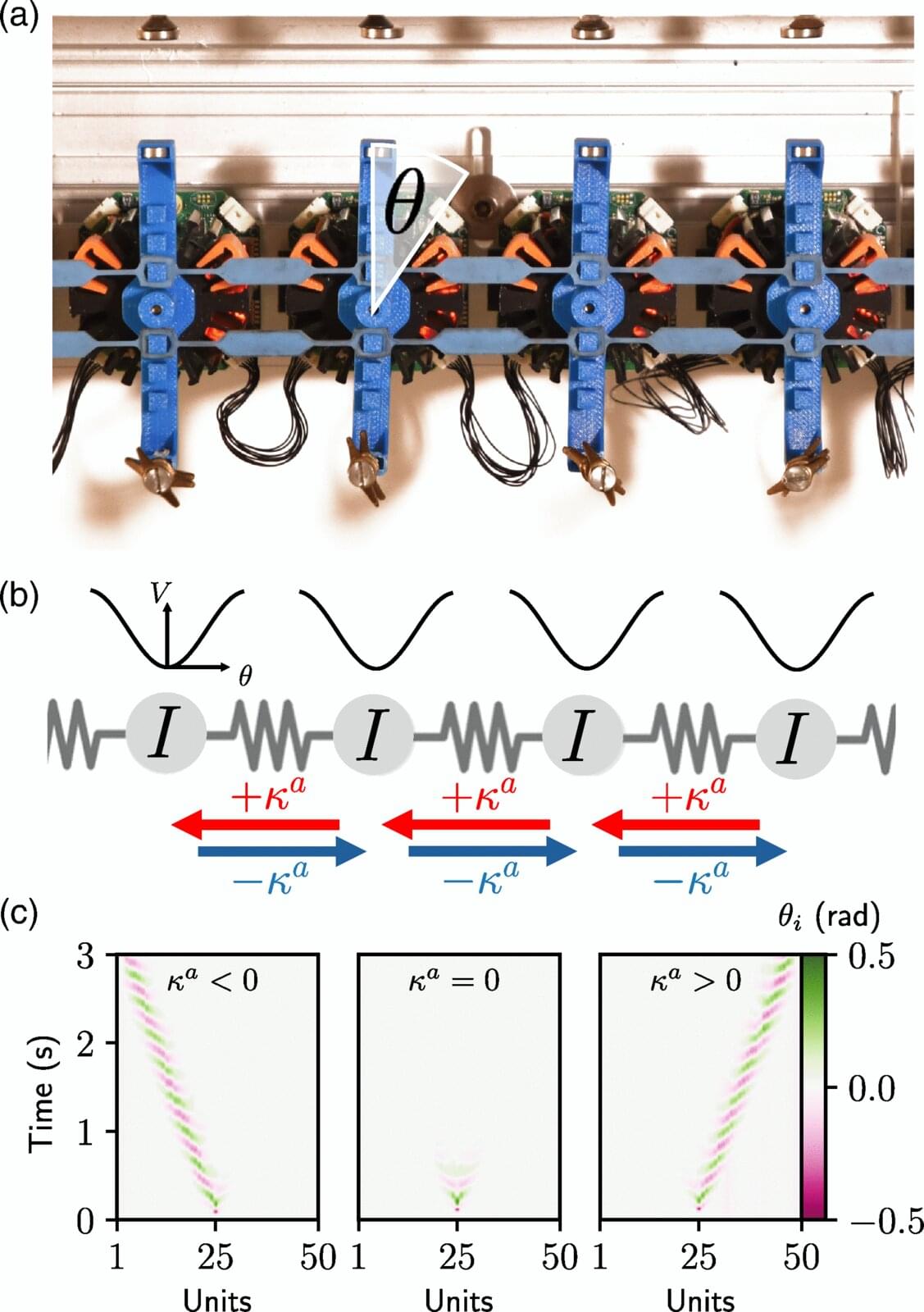A University of Queensland researcher has developed a new mathematical model to explain the evolution of the universe which, for the first time, includes collapsing regions of matter and expanding voids.



Solitonic waves—waves that keep their shape and direction of motion for a long time—have intrigued physicists for almost two centuries. In real-world circumstances, these waves eventually die out due to energy loss. A team of UvA physicists have now discovered how a particular type of interaction can be used to create very stable solitons, even in circumstances where energy is not conserved.
In 1834, John Scott Russell observed an unusual phenomenon in the Union Canal in Scotland. After a moving boat had come to a halt, the water wave that the boat had caused continued moving through the canal, keeping virtually the same speed and the same shape.
It took more than half a century, until the work of Dutch mathematicians Diederik Korteweg and Gustav de Vries in 1895, before the phenomenon that Russell observed had been explained in all its mathematical detail. What Russell had seen was a “solitary wave,” a phenomenon now better known as a soliton.

Questions to inspire discussion.
🚗 Q: How will AI6 be used in Tesla vehicles? A: AI6 will be used for FSD inference, with two chips in every car, enabling advanced autonomous driving capabilities.
🤖 Q: What role will AI6 play in Optimus? A: AI6 will enable on-device learning and reinforced learning in Optimus, enhancing its AI capabilities.
🔋 Q: Will AI6 be used in other Tesla products? A: AI6 will be integrated into every edge device produced by Tesla, including Tesla Semi, Mega Pack, and security cameras.
Technical Specifications.
💻 Q: What is the architecture of AI6? A: AI6 will use a cluster model of individual chips with a software layer on top, similar to Dojo 3 for training.

Large language models (LLMs) excel at using textual reasoning to understand the context of a document and provide a logical answer about its contents. But these same LLMs often struggle to correctly answer even the simplest math problems.
Textual reasoning is usually a less-than-ideal way to deliberate over computational or algorithmic tasks. While some LLMs can generate code like Python to handle symbolic queries, the models don’t always know when to use code, or what kind of code would work best.
LLMs, it seems, may need a coach to steer them toward the best technique.
Enter CodeSteer, a smart assistant developed by MIT researchers that guides an LLM to switch between code and text generation until it correctly answers a query. (Strangely like a text editor “CodeSteer”🤔)
CodeSteer is a smart assistant from MIT that automatically guides large language models to switch between generating text and code, and to refine its response, until it answers a query correctly.


While conventional computers store information in the form of bits, fundamental pieces of logic that take a value of either 0 or 1, quantum computers are based on qubits. These can have a state that is simultaneously both 0 and 1. This odd property, a quirk of quantum physics known as superposition, lies at the heart of quantum computing’s promise to ultimately solve problems that are intractable for classical computers.
Many existing quantum computers are based on superconducting electronic systems in which electrons flow without resistance at extremely low temperatures. In these systems, the quantum mechanical nature of electrons flowing through carefully designed resonators creates superconducting qubits.
These qubits are excellent at quickly performing the logical operations needed for computing. However, storing information—in this case quantum states, mathematical descriptors of particular quantum systems—is not their strong suit. Quantum engineers have been seeking a way to boost the storage times of quantum states by constructing so-called “quantum memories” for superconducting qubits.

How can the behavior of elementary particles and the structure of the entire universe be described using the same mathematical concepts? This question is at the heart of recent work by the mathematicians Claudia Fevola from Inria Saclay and Anna-Laura Sattelberger from the Max Planck Institute for Mathematics in the Sciences, recently published in the Notices of the American Mathematical Society.
Mathematics and physics share a close, reciprocal relationship. Mathematics offers the language and tools to describe physical phenomena, while physics drives the development of new mathematical ideas. This interplay remains vital in areas such as quantum field theory and cosmology, where advanced mathematical structures and physical theory evolve together.
In their article, the authors explore how algebraic structures and geometric shapes can help us understand phenomena ranging from particle collisions such as happens, for instance, in particle accelerators to the large-scale architecture of the cosmos. Their research is centered around algebraic geometry. Their recent undertakings also connect to a field called positive geometry—an interdisciplinary and novel subject in mathematics driven by new ideas in particle physics and cosmology.

“How quantum mechanics and gravity fit together is one of the most important outstanding problems in physics,” says Kathryn Zurek, a theoretical physicist at the California Institute of Technology (Caltech) in Pasadena.
Generations of researchers have tried to create a quantum theory of gravity, and their work has produced sophisticated mathematical constructs, such as string theory. But experimental physicists haven’t found concrete evidence for any of these, and they’re not even sure what such evidence could look like.
Now there is a sense that insights could be around the corner. In the past decade, many researchers have become more optimistic that there are ways to test the true nature of gravity in the laboratory. Scientists have proposed experiments to do this, and are pushing the precision of techniques to make them possible. “There’s been a huge rise in both experimental capability and our theoretical understanding of what we actually learn from such experiments,” says Markus Aspelmeyer, an experimental physicist at the University of Vienna and a pioneer of this work.
Animals like bats, whales and insects have long used acoustic signals for communication and navigation. Now, an international team of scientists has taken a page from nature’s playbook to model micro-sized robots that use sound waves to coordinate into large swarms that exhibit intelligent-like behavior.
The robot groups could one day carry out complex tasks like exploring disaster zones, cleaning up pollution, or performing medical treatments from inside the body, according to team lead Igor Aronson, Huck Chair Professor of Biomedical Engineering, Chemistry, and Mathematics at Penn State.
“Picture swarms of bees or midges,” Aronson said. “They move, that creates sound, and the sound keeps them cohesive, many individuals acting as one.”